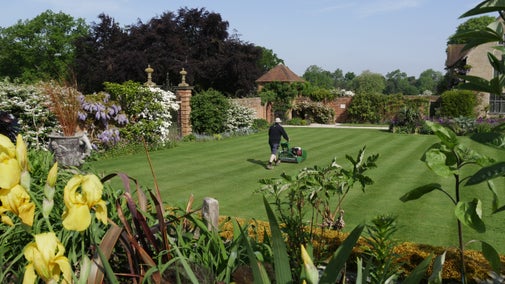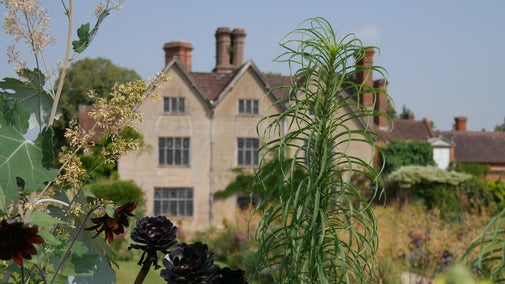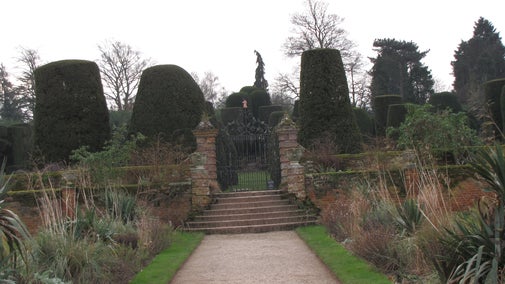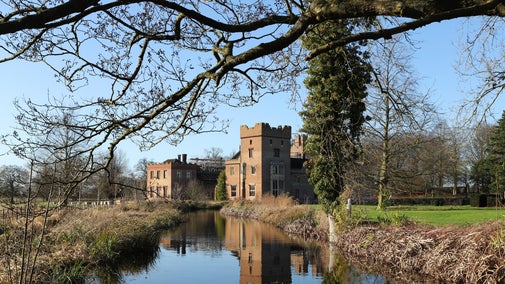
Donate
Everyone needs nature, now more than ever. Donate today and you could help people and nature to thrive at the places we care for.

Packwood is open 363 days a year, meaning the team caring for the house and its collection are bringing their conservation work out from behind closed doors for you to see. Catch glimpses of the team at work during your visit to see conservation in action and find out more about what it takes to care for the house and its unique collection.
Having been cared for by the National Trust since 1941, Packwood’s house and collection fight a daily battle against dust, light and pests; but the Trust has a team of specialised conservators, curators and conservationists that help the team at Packwood look after the collection and repair any items requiring specialist attention.
The collections team care for the house and collections, which involves a lot of inspecting, cleaning and recording. Every morning before the house opens to the public, the team hoover, dust, dry mop and de-cobweb the visitor route, ensuring the house is ready to be presented to visitors.
Annually, each room is deep cleaned from the floor to the ceiling, every object is cleaned, inspected and its condition recorded, ensuring the continuous monitoring and care of the collection.
The house is often kept very dark. This is because light is one of the biggest issues the team face when caring for the collection. Light can not only cause materials like textiles and wood to fade, it also causes items to become structurally weak. For example, curtain linings can shred due to light damage.
To try and combat this, there is Perspex affixed to all Packwood’s windows to block out UV light, and nets and black-out blinds to block out natural sunlight. The team frequently use a lux reader in the house to test how much light is falling on certain objects. These readings help to decide if the nets can be opened and how far down to pull the blinds.

The team must monitor the presence of pests in the house as many can be harmful to the collection. There are two main types of pests; borers and grazers.
Borers include woodworm and death watch beetle, pests which cause holes to appear in wooden furniture, gradually breaking down the structure of the items and causing breaks and cracks. Grazers include carpet beetles, which feed on textiles, and silverfish which graze on damp wood and paper.
To monitor which pests are getting into Packwood the team conduct an IPM (Integrated Pest Management) four times a year. There are blunder traps around the house which collect pests and during the IPM these are checked and pest levels recorded.
To prevent pests coming into the house the team ensure the house is an environment in which the pests cannot thrive or breed. This includes ensuring the house is not too warm or humid, keeping windows and doors closed, not having food in the house, and ensuring the regular cleaning of all spaces.
Packwood has a varied collection of textiles and is famous for its European tapestries collected by Graham Baron Ash during his work on the house. The team work hard to ensure they are kept in the best condition
Tapestries are a woven cloth made of usually woollen warp threads that provide strength and then either woollen or silk weft threads that provide the colour and detail. The warp would be held vertically on the loom and then the weft was woven on from side to side. These would be woven using a diagram known as a cartoon as it would be unlikely that the weavers could read.
One of the biggest risks to tapestries is from light. Tapestries will start to take on a blue tinge with age as blues, dark reds, browns and blacks don’t fade quickly whereas yellows and greens fade very quickly in light. In addition to fading, light can also cause damage to individual fibres causing them to split.
Pests such as moths also cause a risk to tapestries. The tapestries hang still for a long period of time so need to be carefully inspected to ensure any damage caused by pests eating the fibres doesn’t go unnoticed.

Each year during the property’s deep clean the team carefully inspect all the tapestries for any new damage that may have happened since the previous year.
Light levels falling onto the tapestries are also monitored throughout the year using lux readers and blue wool dosimeters which you may see around Packwood during your visit. The blue wool will fade if the area is exposed to too much light, indicating damage to the tapestry.
The conservation team also clean the tapestries by holding a suction-controlled vacuum about half an inch away from the tapestry. This removes any surface dust from the tapestry without causing any damage to the fabric itself. This is only completed every three to five years for the front and every five to 10 years on the back to reduce the risk of any damage being caused while working on the tapestry.
Periodically Packwood is also visited by a textile conservator who specialises in tapestries and assesses the condition of them. This allows the team to budget conservation resources to the pieces that require the work most urgently.
One of the more recent specialist conservation projects to take place was the work on the Coronation of Marcus Aurelius tapestry. Woven in c.1600-1679 in Antwerp, Belgium by Michiel Wauters, it was one of the many items Baron Ash purchased for Packwood from neighbouring Baddesley Clinton in 1932 and hangs in the Long Gallery.
As one of Packwood’s most fragile tapestries it was sent away for specialist conservation in 2021 thanks to a generous legacy donation.
The tapestry was then sent to the National Trust’s Textile Studio in Norfolk where conservators completed their specialist work.
The tapestry condition was documented and carefully vacuumed to remove any loose surface soiling and mould. The lining was then removed which revealed the extent of previous repairs with 33 patches found on the reverse. These were removed and the tapestry was sent to Belgium for specialist wet cleaning in which the tapestry is placed on a large mesh bed and a fine mist of water and detergent is released from above with gentle suction to remove the soiling.
The tapestry was then returned to the Textile Studio where areas of damage and weakness were stabilised by conservation stitching, with work being completed in 20cm sections. There are 17 full sections on the tapestry with each section taking 45-80 hours to complete.
The Tapestry returned to Packwood in 2022 and can now been seen hanging in the long gallery.
With your ongoing support, we're able to continue our vital conservation work. Thank you for helping to protect these special places.

Everyone needs nature, now more than ever. Donate today and you could help people and nature to thrive at the places we care for.
Find out more about what it takes to care for and manage the varied garden areas at Packwood.

Delve into Packwood’s past and find out about how one man’s vision transformed a Georgian and Victorian style house into the perfect country house of Old England that we see today.

Packwood House is the culmination of a single man's vision of Old English country hospitality. Step inside and discover a cow barn transformed into a Great Hall, a 1930s Long Gallery filled with 16th-century tapestries, and much more.

Explore Packwood’s garden and its seasonal delights. Flamboyant flower borders in a ‘mingled’ style, magnificent yew trees and a bountiful kitchen garden all wait to be discovered.

From winding paths through woodland to wide open spaces, Packwood is the perfect place for a family day out in the great outdoors.

Read about our strategy, which focuses on restoring nature, ending unequal access and inspiring more people.

We believe that nature, beauty and history are for everyone. That’s why we’re supporting wildlife, protecting historic sites and more. Find out about our work.
